The herding of domesticated animals permits food production to be extended into many areas of the world too arid for sustainable agriculture, such as the Eurasian steppes, the American short-grass plains, and the African savannas. The productivity of these herds is multiplied several times over if dairying is practiced.

Cattle herding, as well as dairying, has long been a staple of the subsistence economy in those areas of sub-Saharan Africa suitable for the survival of cattle: the Sahel region and those parts of eastern and southern Africa at sufficient altitude to be free of the tsetse fly. In the semi-arid parts of this vast area, which are unsuitable for agriculture, herding became the primary food production system.
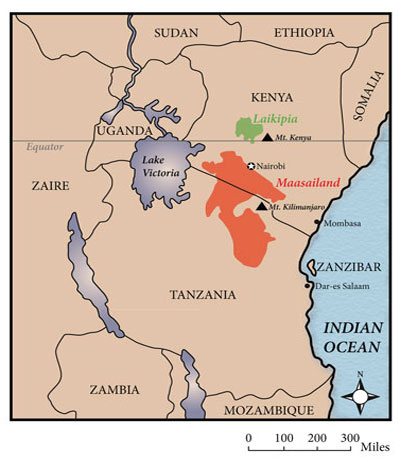
Cattle herding is attested in northern Africa as early as ca. 9000 BP. On present evidence, its earliest appearance in eastern Africa was between 5,000 and 4,000 years ago. The Laikipia Plateau, in north-central Kenya, has evidence of many early Pastoral Neolithic sites, and for this reason our project is concentrating on that area.
The goals of the Laikipia Regional Survey project are to identify Pastoral Neolithic sites, to investigate the inter-relationship between these early pastoralists and the indigenous Later Stone Age hunter-gatherer groups of the area, and to ascertain (via analysis of fat residues on the interior of potsherds) whether dairying was practiced. In addition, our earlier ethnoarchaeological research on the subsistence economy of the Maasai (1990–2002) will provide models of settlement and subsistence strategies against which to assess our archaeological findings in Laikipia.
The 2009 Field Season
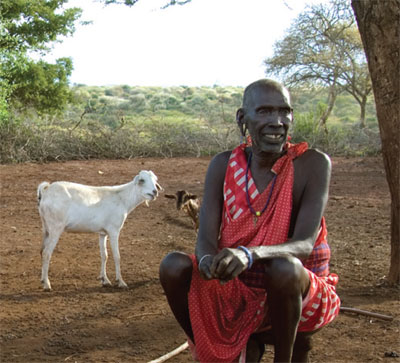
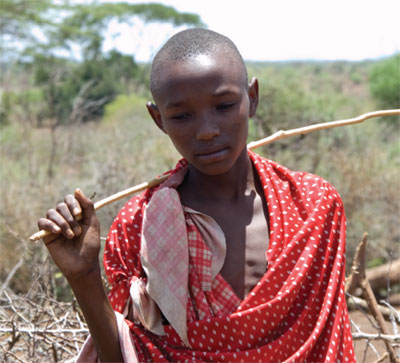
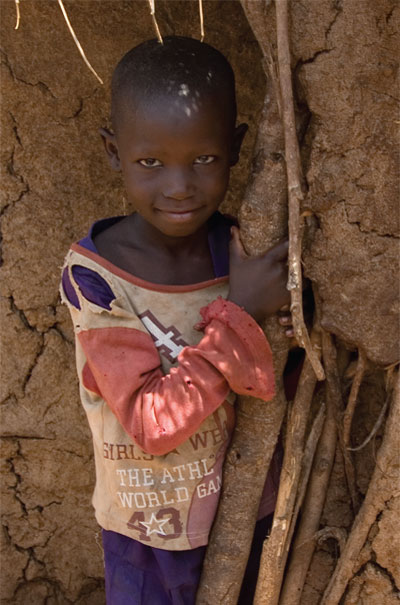
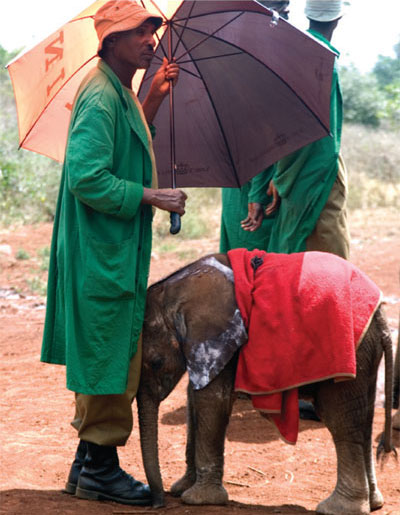
William Fitts and I returned to Kenya in March 2009. We planned to follow up on previous research relating to settlement patterns in southern Maasailand, and to continue archaeological fieldwork in the Laikipia Highlands, ongoing since 2002. We were accompanied by Penn undergraduate students Hannah Lau and Nina Johnson, and Penn Museum photographer Jennifer Chiappardi. We were later joined by archaeologists Mulu Muia, University of Nairobi, and Paul Watene, Simon Katisya, and Christopher Kirwa from the National Museums of Kenya.
In order to give the students the opportunity to see Maasailand and Laikipia, we first headed south from Nairobi towards Maasailand, traveling seven hours through Kaputiei and Kisongo Maasai territories to the foothills of Kilimanjaro. We arrived just before dark at our favorite local hotel, Kibo Slopes, where we were warmly welcomed and fed.
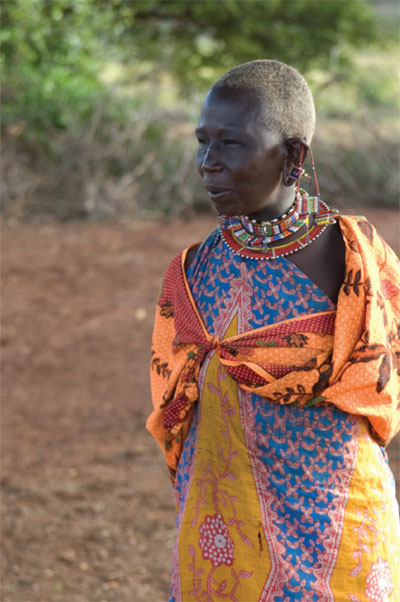
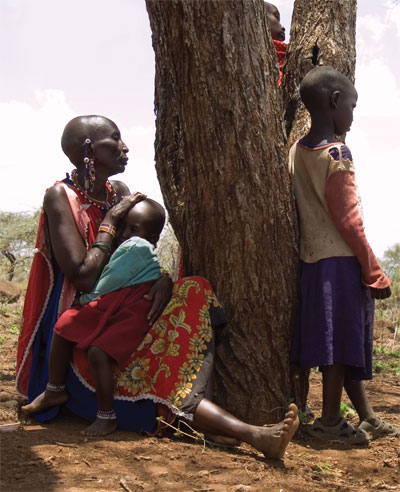
The next morning the students had their first view of Kilimanjaro, the tallest mountain in Africa, looming up from the hotel’s gardens. Immediately after breakfast we went in search of my Maasai consultants and their families, 40 kilometers of rough driving away. Our appearance at the family compound was auspicious, coinciding with the birth of their newest grandchild only minutes before we arrived. My main consultant, Ole Koringo, was at another family homestead at Enkusero, further up the slopes of Kilimanjaro and difficult to reach even with a 4-wheel drive vehicle. Bush vegetation and rocks obstructed the way. Despite rugged conditions, we managed to arrive in the late afternoon and to return safely to our hotel just after dark.
After some days traveling in southern Maasailand, meeting with families and looking at present-day Maasai settlements, we met with elders at Mbirikani to discuss the layout of houses within settlements and the extent of grazing areas. These data will be superimposed on maps of abandoned settlements found during surveys in 2002 by William Fitts and on maps of recently discovered archaeological sites in Laikipia.
Our return journey to Nairobi took us through Amboseli Reserve, formerly a traditional Maasai dry season refuge, which was taken over by the British colonial government as a game reserve. During times of drought, Maasai herds are given limited access to the park for grazing and watering, a practice that is strictly controlled. Cattle are moved herd-by-herd towards water after elephants and other wildlife have vacated the waterholes. Each herd waits patiently until the herd ahead has finished drinking before moving forward.
We returned to Nairobi through Matapata Maasai territory, north into Dalalekutuk territory, and finally back through Kaputiei. We spent one day of rest in Nairobi, visiting the Nairobi Museum and the Sheldrick Elephant Orphanage where we met the youngest orphan, Kibo, named for the snowy peak of Kilimanjaro. Kibo was rescued by Maasai elders.
In Nairobi, we were joined by our Kenyan team members. The next day, we traveled north from Nairobi across the Equator to the Laikipia Plateau, arriving at Mpala Research Centre the same evening. Our plan was to travel two hours north each day, to complete excavations begun in 2008 of a Later Stone Age hunter-gatherer rock shelter, and to collect samples for radiocarbon dating from an adjacent burial cairn. That area turned out to be off-limits because of British military training in the area. We decided to investigate another series of rock shelters, burial cairns, and a large settlement site at Clifford Rocks, only a half hour away from base camp. Even this area was fraught with hazards; elephants traversed the area just north of Clifford Rocks as they made their way to water in the morning and the evening. Unlike the elephants of Amboseli, the elephants of Laikipia have no love for people and can be very aggressive.
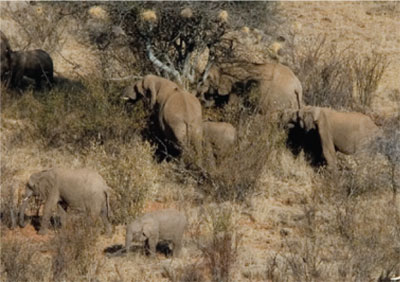

A full day was spent at Sabuk Lodge, northeast of Mpala, where we carried out surface collection of pottery, lithics, and faunal remains at a possible Pastoral Neolithic settlement. Since pottery from both Later Stone Age hunter-gatherer and Pastoral Neolithic sites is integral to our study, we have collaborated with Professor Richard Evershed at Bristol University since 2004 to extract and analyse residues from archaeological contexts. Our aim was to identify and date the original contents of vessels, specifically to search out animal fats derived from dairy products. Residues might provide evidence of when dependence on cow’s milk originated among East African populations. This has significance for the question of when adults developed lactose tolerance, the ability to ingest milk and milk products successfully, a trait not generally common in other parts of the world.
The 2009 season was a success, as we collected data for our study and introduced two Penn undergraduates to the rigors of fieldwork. Our long-term interest lies with establishing a well-founded picture of the earliest herding economy of this region—when it began, how it developed, how herders interacted with indigenous hunter-gatherers, and the strategies herders used for survival. We look forward to future seasons in East Africa.
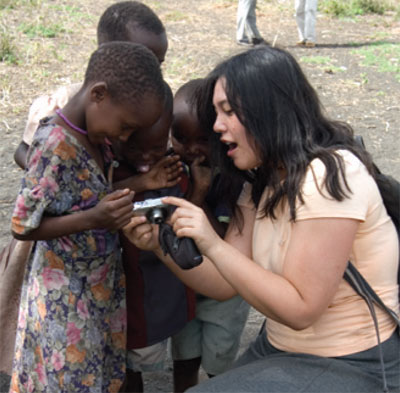
“Dwende!” The first word I learned in Swahili means “Let’s go!” And go we did, experiencing in two and a half weeks more sights, sounds, and sensations than I could have hoped to know in a lifetime. As a student participant in Dr. Kathleen Ryan’s Laikipia Regional Survey project, I was able to apply to our fieldwork many of the skills I acquired during my time at the University of Pennsylvania, both from my undergraduate education and as a research assistant at MASCA (Museum Applied Science Center for Archaeology). I also acquired knowledge about Africa and many new skills. I will forever value the opportunity to participate in such a fascinating project. I feel I have come away from our fieldwork having grown both intellectually and personally.
We spent the first part of our trip in Maasailand, in southern Kenya. We visited Dr. Ryan’s primary Maasai consultants, with whom she has worked for the last two decades. Dr. Ryan is a part of their family, complete with Maasai name [Sempele, meaning “strong woman”] and familial status; the relationship runs deep. The visit allowed us to meet and connect with our Kenyan colleagues, as well as to become familiar with the type of settlement we would be looking for in archaeological contexts later in Laikipia. Modern Maasai housing compounds, called bomas, offer an ethnographic example of the same architecture and site plan. We also visited a second boma, owned by a group of Maasai who communally administer the compound and the surrounding landscape. Dr. Ryan interviewed the members of the second boma about how they utilize the land around their home for grazing.
We spent the second part of the trip in Laikipia, conducting surveys throughout the area. The information gleaned from our time at the bomas was of material importance here. Based on archaeological footprints, Dr. Ryan and Dr. William Fitts showed us how to locate areas where boma-like structures may have stood in the past. They taught us to conduct topographic surveys, providing evidence of individual homes through subtle changes in elevation and subsequent vegetation growth. Our ethnographic research was quickly and directly applied to our archaeological research. My Penn coursework from one of my favorite classes, Archaeology of Landscape, came to life in the field.
The other great boon from this trip was the opportunity to work with fantastic researchers, both American and Kenyan, who are greatly invested in teaching young students both the method and content of Kenyan archaeology. The three Kenyan field technicians, for example, took it upon themselves to narrate everything they observed as we surveyed different areas of Laikipia; they then told us why this information was important. This knowledge and field experience is, to me, an invaluable part of my education.
-
Nina Johnson and Hannah Lau, undergraduates at Penn, make friends with young Maasai wives at Mbirikani.
- Mbirikani elders explain the layout of the individual houses within each homestead. A homestead can have many families grouped together within a fenced enclosure. Each settlement has access to an individual grazing area and a more distant communal area for rotational grazing.
-
This typical Maasai house belongs to the elder wife at Ol Girra. One of her sons and his wife live close by.
-
Bill Fitts instructs Hannah Lau in surveying techniques at a Pastoral Neolithic open-air settlement near Clifford Rocks on Mpala Ranch.
- Paul Watene and Simon Katisya show Hannah wild animal remains deposited by hyenas at one of the Clifford rock shelters. Kathleen Ryan is in the background.
- Dr. Mulu Muia of the University of Nairobi discusses the significance and dating of pottery found at Sabuk Ranch with Penn undergraduates Nina Johnson and Hannah Lau.
Graham, Nadia. “Subsistence in the African Neolithic and Iron Age: Lipid Residues in Archaeological Pottery from Kenya and Niger.” M.Sc. thesis, University of Sheffield, 2005.
Evershed, R.P., S. N. Judd, M. J. Lockheart, and S. Jim. “Lipids in Archaeology.” In Handbook of Archaeological Sciences, edited by D.R. Brothwell and A.M. Pollard, pp. 331-349. Chichester: John Wiley & Sons, 2001.






